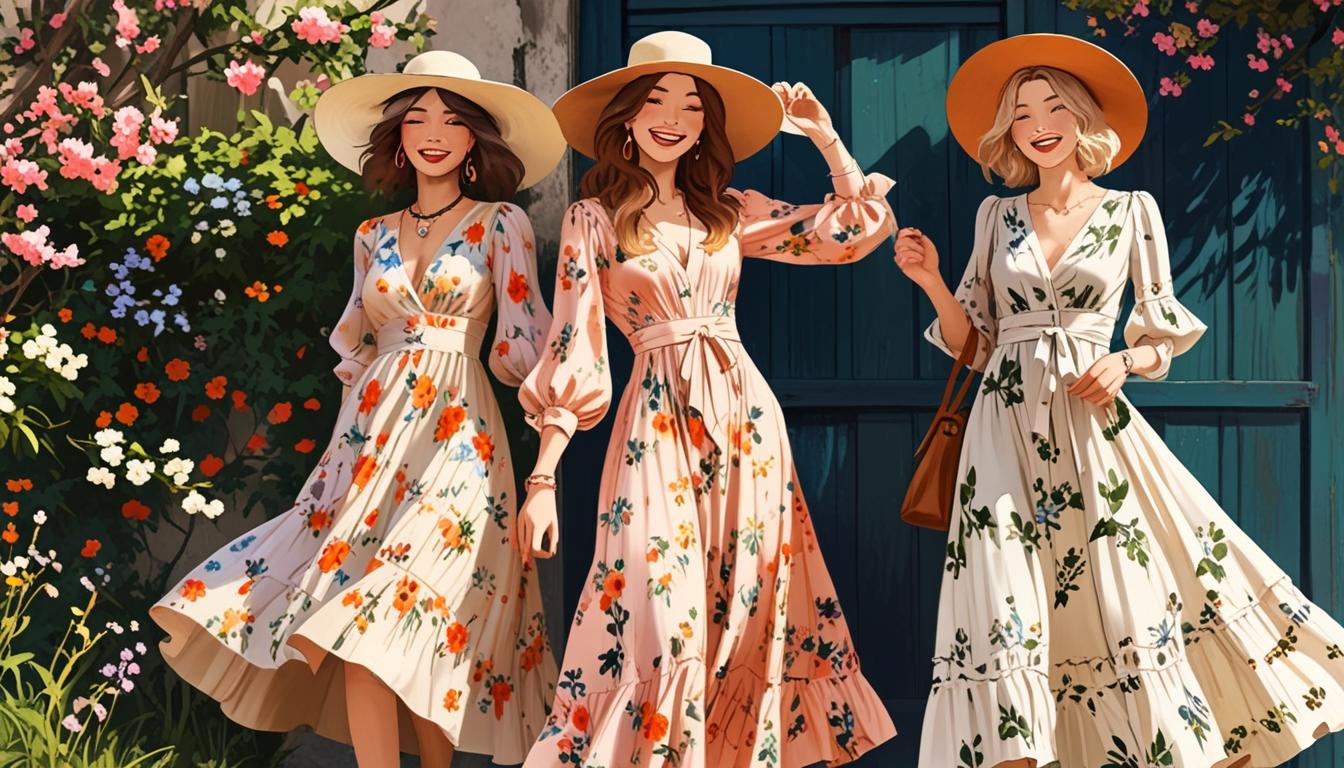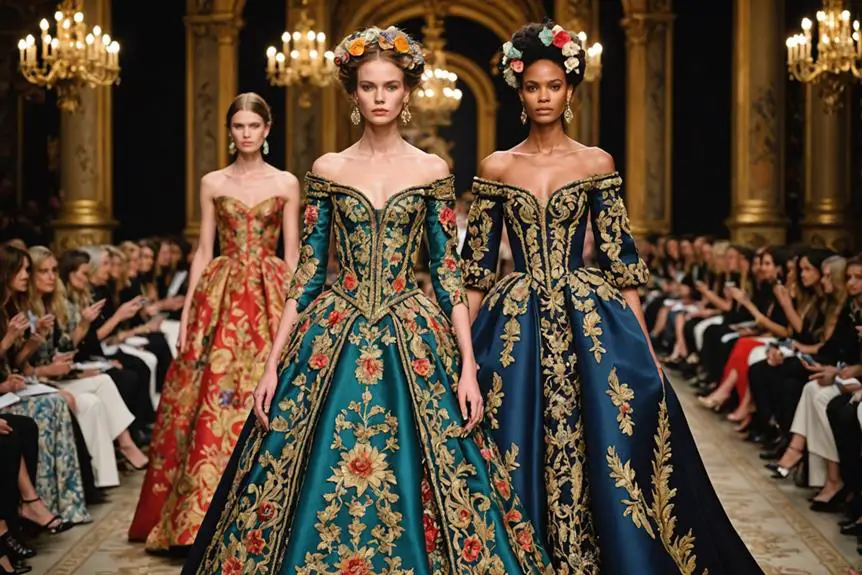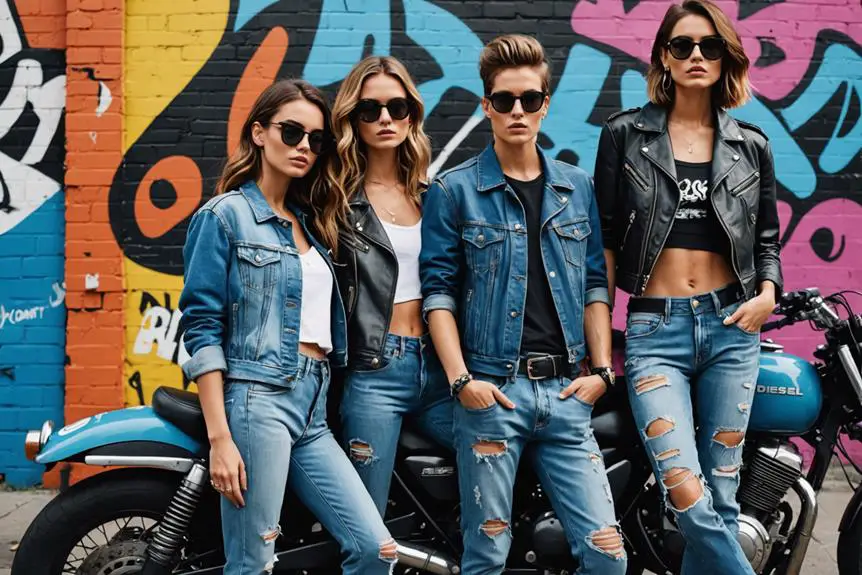In the early 1960s, fashion brands like Mary Quant, Biba, and Yves Saint Laurent led a vibrant shift in style. Mary Quant, known for the mini skirt, embraced youth and freedom, while Biba showcased bold patterns and colors with its shift dresses. Yves Saint Laurent blended classic elegance with modern flair, offering chic evening wear. Levi Strauss & Co. popularized denim, making blue jeans a staple for young people. The decade was marked by cultural movements like the Mod style and the Hippie movement, all of which transformed fashion. There's so much more to explore about this dynamic era's influence!
Key Fashion Trends of the 1960s
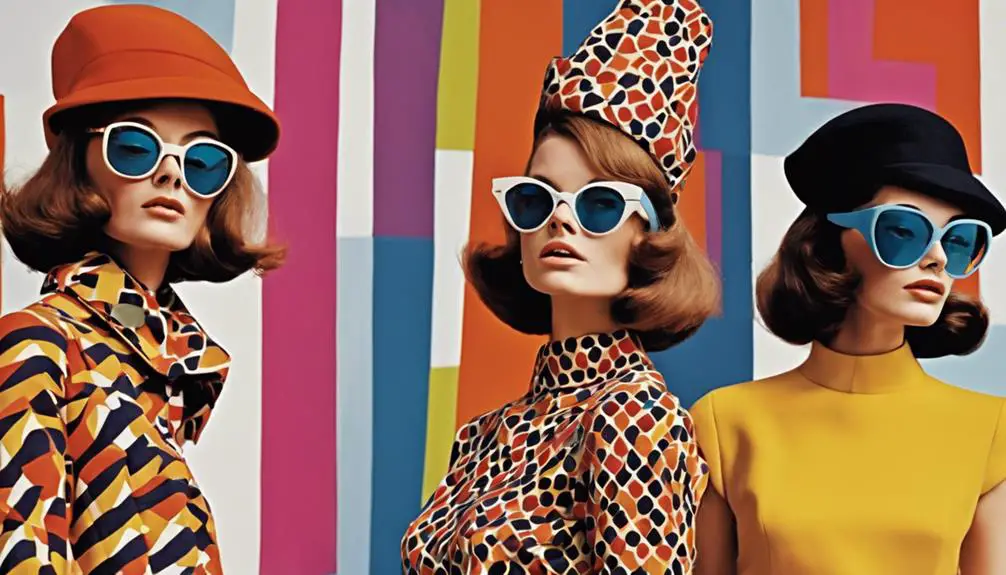
Embracing a spirit of rebellion and creativity, the early 1960s were defined by bold fashion choices that challenged traditional styles. You'd find yourself captivated by the mini skirts, a game-changer popularized by designer Mary Quant. This daring garment became emblematic of the decade and signified a newfound freedom for women.
Alongside mini skirts, shift dresses featuring bright colors and geometric patterns strutted their stuff, with brands like Biba leading the charge. Significantly, vintage Ralph Lauren items from this era reflect the same spirit of innovation and quality that defined many popular brands of the time.
As you explore this vibrant era, you'd notice how the use of PVC in fashion made waves, especially with collections like Mary Quant's Wet Collection. These innovative materials showcased the playful and experimental side of 1960s fashion. The introduction of Go-Go boots added an extra flair to outfits, perfectly complementing the casual look that many embraced during this time.
Vintage clothing from this period remains iconic, capturing the essence of youthful exuberance and daring self-expression. Accessories played a fundamental role too, with oversized sunglasses and statement jewelry becoming essential for completing those eye-catching looks. These details weren't just afterthoughts; they were essential components of the playful aesthetic that defined the decade.
In this exciting landscape of fashion, the early 1960s encouraged a shift away from the conservative styles of the past, paving the way for a generation that wanted to express themselves. You can almost feel the energy of the time, as each outfit radiated confidence and creativity, making the 1960s a truly unforgettable chapter in fashion history.
Influential Designers and Brands
As the early 1960s unfolded, a wave of innovative designers and brands emerged, reshaping the fashion landscape. This era, often dubbed the Swinging Sixties, was marked by bold styles and a spirit of experimentation. Designers like Mary Quant revolutionized women's fashion, famously popularizing the mini dress through her London boutique, Bazaar. Her accessible price points made trendy fashion attainable for many, paralleling the rise of distinct labels such as Celine, which began to make its mark during this significant period.
Let's take a closer look at some influential figures and their contributions:
- André Courrèges: Known for his Space Age aesthetics, he introduced geometric silhouettes and materials like PVC, which became synonymous with the era's bold fashion. His futuristic vision truly captured the essence of the time.
- Yves Saint Laurent: A master of evening wear, he shifted styles with his elegant designs, merging traditional elements with modern flair. His creations often pushed boundaries, influencing the way women dressed for formal occasions.
- Hubert de Givenchy: Famed for his sophisticated style, Givenchy created timeless pieces that reflected elegance and grace, dressing some of the most iconic figures of the decade.
Other designers like Pierre Cardin, who pioneered synthetic materials, and Ossie Clark, celebrated for his flowing, bohemian looks, also made significant impacts.
Levi Strauss & Co. played a vital role in the denim revolution, making blue jeans a beloved staple among the youth. Together, these designers and brands not only defined an era but also left lasting legacies in the world of fashion, much like the vintage identification techniques used to appreciate classic labels today.
Cultural Movements and Their Impact
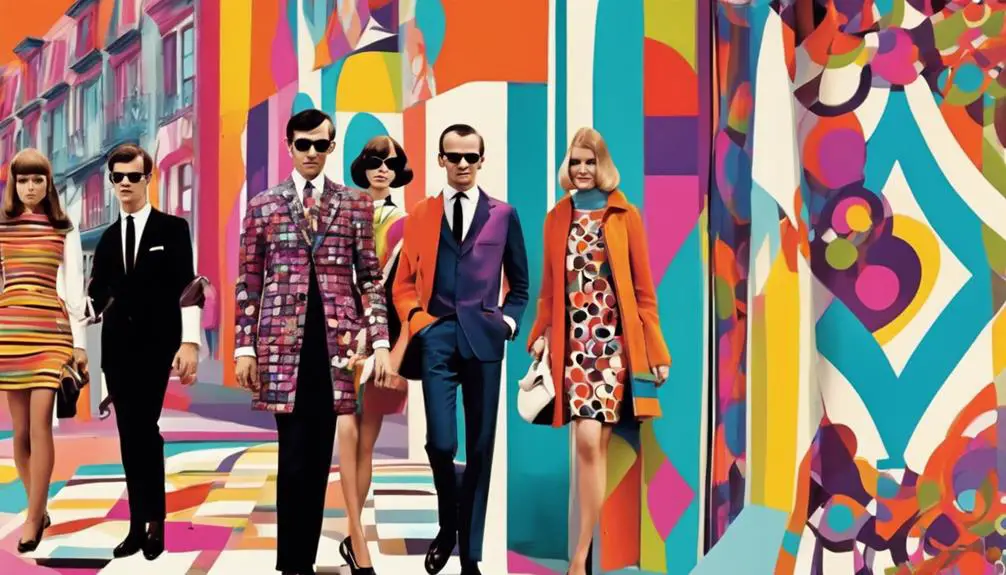
While the early 1960s were defined by groundbreaking fashion, cultural movements played an equally essential role in shaping the styles of the time. The Mod style emerged as a prominent influence, with young people embracing clean-cut, smart silhouettes inspired by music icons like The Beatles and The Who. You'd see them in slim-fitting Italian suits and parka jackets, capturing the essence of this vibrant culture.
Simultaneously, the hippie movement offered a contrasting perspective, promoting laid-back, bohemian styles. This fashion embraced natural materials and bright patterns, reflecting ideals of peace and freedom that resonated deeply with many.
As these trends clashed, the Peacock Revolution challenged traditional menswear norms, introducing flamboyant styles characterized by bold colors and patterns. Designers like John Stephen and Michael Fish became key figures in this movement, encouraging self-expression.
Inspiration also came from the Space Age, as designers like André Courrèges and Pierre Cardin utilized synthetic materials and geometric designs. Their futuristic creations mirrored the excitement of the space race, enchanting the imagination of the public.
The bustling Carnaby Street became a hotspot for independent boutiques, showcasing these innovative fashion trends. Here, young people found daring styles that represented their individuality, including the iconic short skirts that defined the decade.
These cultural movements collectively shaped the early 1960s fashion landscape, making it a revolutionary period where style and self-expression flourished.
Iconic Fashion Styles and Silhouettes
The early 1960s brought a wave of iconic fashion styles and silhouettes that captured the essence of a generation. This era was marked by bold choices and innovative designs, thanks to influential figures like Mary Quant. Her creations popularized the shift dress, a loose-fitting silhouette that emphasized comfort and simplicity, often adorned with vibrant colors and geometric shapes.
The popularity of vintage clothing began to rise, reflecting a renewed interest in styles that celebrated individuality and self-expression.
Mini skirts emerged as a defining fashion statement, revolutionizing women's daywear with their daring length. This youthful style encouraged freedom of movement and self-expression.
Tailored suits, inspired by the elegance of Jackie Kennedy, featured structured designs with short jackets and matching skirts, introducing playful elements like oversized buttons.
As the decade progressed, bell-bottom trousers made a significant entrance, reflecting the influence of youth culture and a shift towards more relaxed styles. Accessories played an essential role in completing these looks, with oversized sunglasses and statement jewelry often paired with mod fashion outfits.
Here are three key styles that defined the early 1960s:
- Shift Dress: Loose-fitting, comfortable, and often adorned with bold colors and patterns.
- Mini Skirt: A daring, game-changing piece that embodied the youthful spirit of the era.
- Tailored Suits: Structured yet playful, these outfits emphasized elegance with modern flair.
These iconic styles not only shaped the fashion landscape of the early 1960s but also left a lasting impact that continues to influence designers today.
Legacy of 1960s Fashion Brands
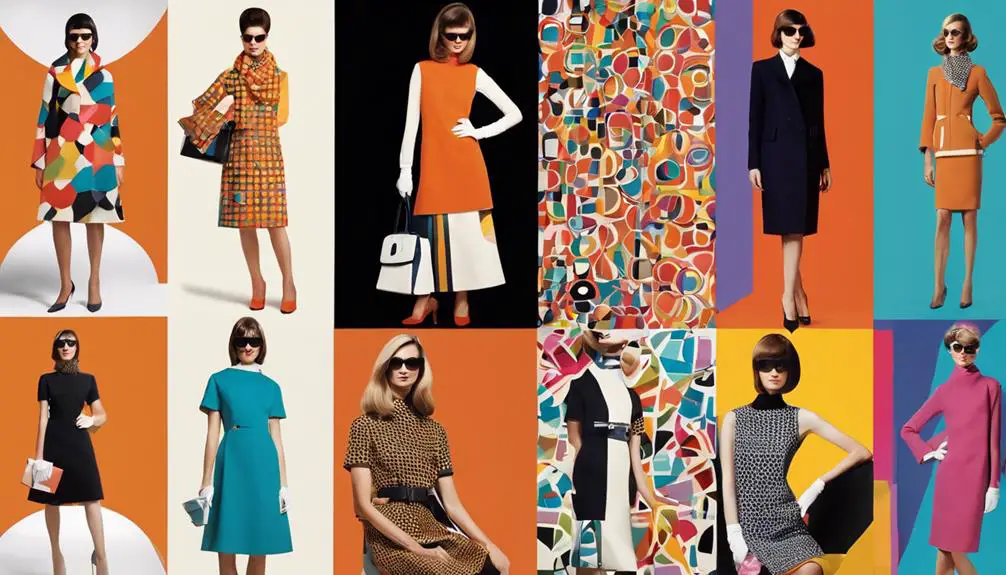
Several brands from the 1960s continue to shape modern fashion, leaving a legacy that resonates today.
Mary Quant's Ginger Group, for instance, revolutionized women's fashion by popularizing the mini skirt. This iconic piece not only defined an era but also made stylish, affordable clothing accessible to many. You can see its influence in contemporary collections that celebrate mix-and-match separates.
The era also saw the emergence of unique styles such as flared trousers that captured the spirit of rebellion and self-expression. Pierre Cardin's avant-garde designs introduced futuristic styles characterized by bold geometric shapes and synthetic materials like PVC. His innovative approach paved the way for modern fashion's experimentation with materials and shapes.
Then there's Levi Strauss & Co., which transformed casual wear by establishing denim as a wardrobe staple. Today, you can't walk down the street without seeing someone in a pair of jeans, an indication of that lasting impact.
The mod fashion movement, driven by brands like Biba and Foale & Tuffin, embraced youthful designs full of bright colors and patterns, shaping street style for generations.
You can still spot echoes of that vibrant style in today's fashion.

